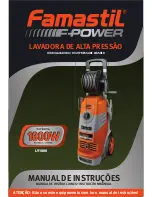
11
ENGLISH
Red wine: soak in water and detergent, rinse
and treat with acetic or citric acid, then rinse.
Treat any residual marks with bleach.
Ink: depending on the type of ink, moisten the
fabric first with acetone (*), then with acetic acid;
treat any residual marks on white fabrics with
bleach and then rinse thoroughly.
Tar stains: first treat with stain remover,
methylated spirits or benzine, then rub with
detergent paste.
(*) do not use acetone on artificial silk
Detergents and additives
Good washing results also depend on the
choice of detergent and use of the correct
quantities to avoid waste and protect the
environment. Although biodegradable,
detergents contain substances which, in large
quantities, can upset the delicate balance of
nature.
The choice of detergent will depend on the type
of fabric (delicates, woollens, cottons, etc.), the
colour, washing temperature and degree of
soiling.
All commonly available washing machine
detergents may be used in this appliance:
– powder detergents for all types of fabric,
– powder detergents for delicate fabrics (60°C
max) and woollens,
– liquid detergents, preferably for low
temperature wash programmes (60°C max)
for all types of fabric, or special for woollens
only.
The detergent and any additives must be placed
in the appropriate compartments of the
dispenser drawer before starting the wash
programme.
If using concentrated powder or liquid
detergents, a programme without prewash
must be selected.
The washing machine incorporates a
recirculation system which allows an optimal use
of the concentrated detergent.
Pour liquid detergent into the dispenser drawer
compartment marked
just before starting
the programme.
Any fabric softener or starching additives must
be poured into the compartment marked
before starting the wash programme.
Follow the product manufacturer’s
recommendations on quantities to use and do
not exceed the «MAX» mark in the detergent
dispenser drawer.
Quantity of detergent to be used
The type and quantity of detergent will depend
on the type of fabric, load size, degree of soiling
and hardness of the water used.
Water hardness is classified in so-called
“degrees” of hardness. Information on hardness
of the water in your area can be obtained from
the relevant water supply company, or from your
local authority.
Follow the product manufacturers’ instructions
on quantities to use.
Use less detergent if:
– you are washing a small load
– the laundry is lightly soiled
– large amounts of foam form during washing.
Drying
■
All laundry to be dried must be thoroughly
spun. The higher the spin speed, the lower
the power consumption and the shorter the
drying time.
■
Scrupulously follow the instructions on each
garment label, making sure that it is suitable
for tumble-drying.
■
Do not tumble dry the following:
– wool, silk, synthetic curtains;
– articles with a plasticised finish, nylon
tights or stockings, sleeping bags, quilts,
articles made of foam rubber or containing
materials similar to foam rubber, fabrics
with metal inserts;
– fabrics which tend to fray.
Important: during the drying cycle, the water
tap must be left open and the drain hose must
be correctly positioned.
0,
0-15
16-25
26-37
more than 37
Level
1
2
3
4
soft
medium
hard
very hard
0
0-
0
7
0
8-14
15-21
more than 21
Characteristic
Degrees
German
°dH
French
°T.H.
Degrees of water hardness






































